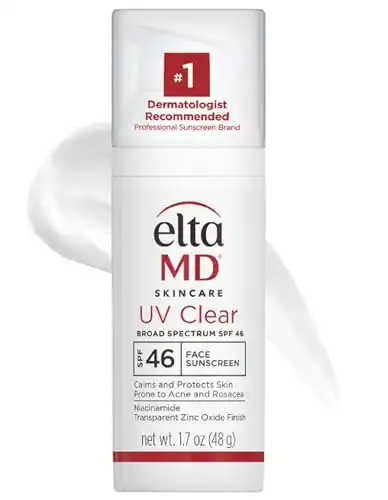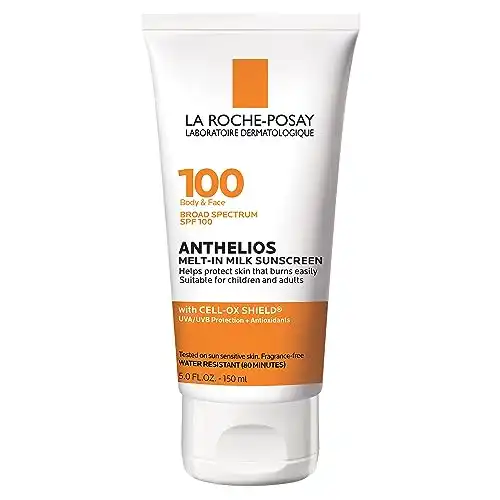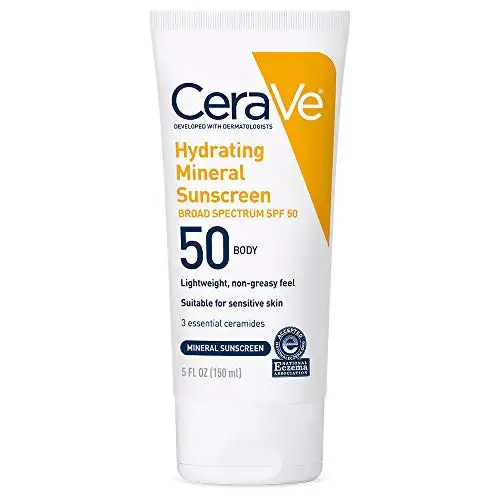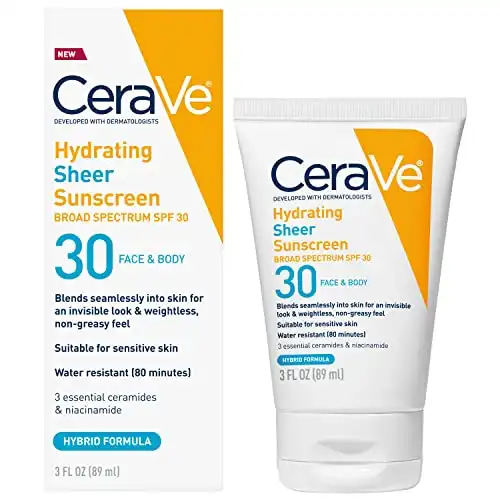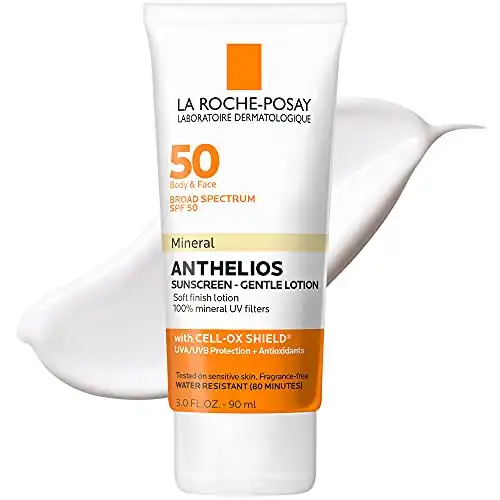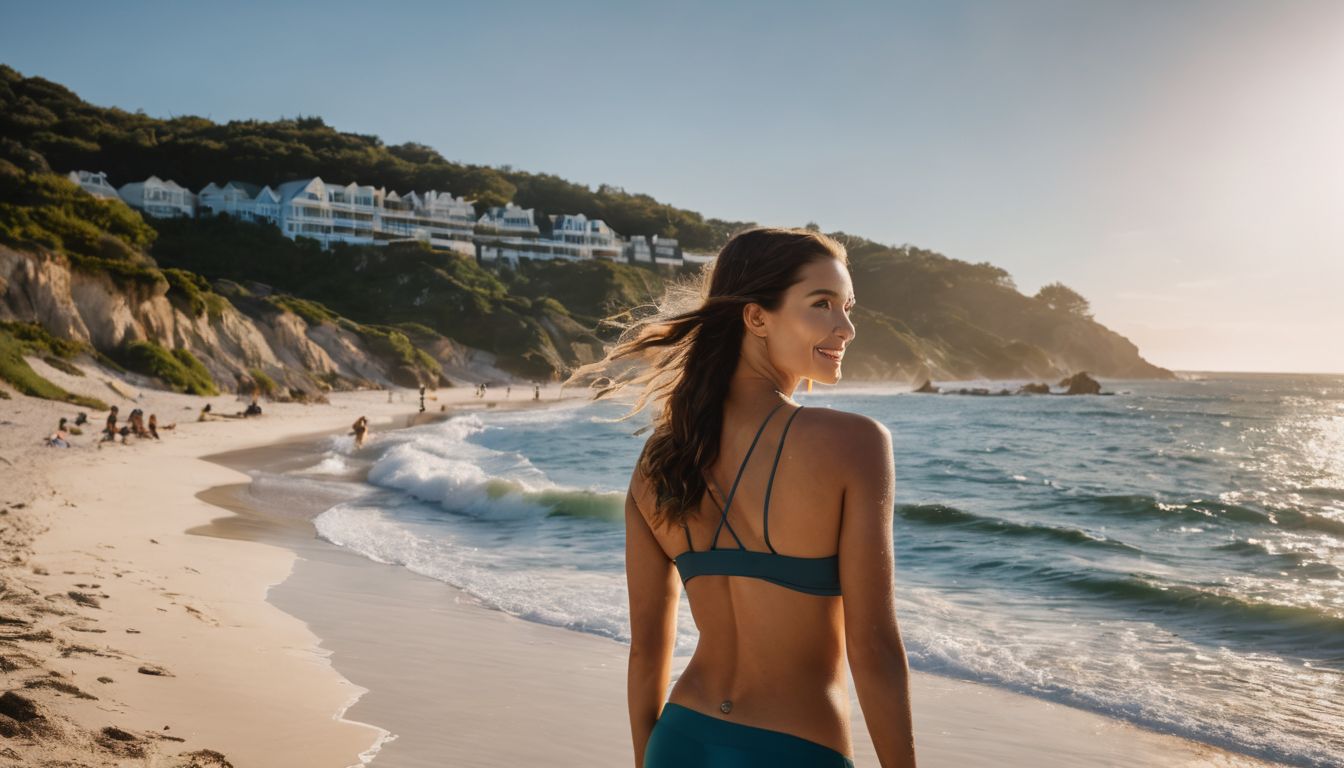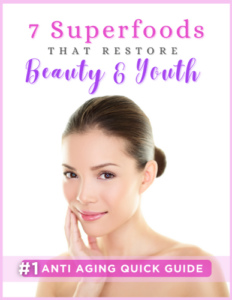Struggling to choose between CeraVe and La Roche-Posay sunscreen? Many have this common dilemma given their popularity in the skincare market. One notable difference is that while both brands cater to dry, sensitive skin, La Roche-Posay often offers higher SPF levels.
This blog post will help you navigate these sunscreens’ key features, protection levels, textures and benefits so you can make an informed decision. Ready to meet your new favorite sunscreen in 2024?
Key Takeaways
- Both CeraVe and La Roche-Posay offer dermatologist-recommended sunscreens suitable for dry, sensitive skin.
- La Roche-Posay has a wider range of products, including higher SPF ratings in their Anthelios line.
- CeraVe focuses on hydrating properties while La Roche-Posay offers added nourishment with its thicker cream texture.
Table of Contents
Overview of Cerave and La Roche-Posay Sunscreens
Cerave and La Roche-Posay sunscreens are two popular brands known for their effective sun protection and hydration properties.
Key features
Discover the multiple advantages of each product that make Cerave and La Roche-Posay sunscreens stand out in skincare:
- Both brands offer dermatologist-recommended products, ensuring safety and efficacy.
- CeraVe and La Roche-Posay provide a range of sunscreens suitable for dry, cracked, and chafed skin.
- They both have unique textures: CeraVe has an ointment texture while La Roche-Posay features a thick cream texture.
- Sun protection is prioritized as La Roche-Posay’s Anthelios range offers higher SPF ratings compared to CeraVe.
- They cater to varied skincare needs with La Roche-Posay offering a broader range of products, especially within their Anthelios line.
- Mineral sunscreens are available from both brands with active ingredients like zinc oxide or titanium oxide for robust sun protection.
- Products like CeraVe’s Mineral Sunscreen Lotion for Face SPF 50 and La Roche-Posay’s Anthelios Ultra Light Face Sunscreen SPF 60 showcase their commitment to superior UV defense.
- They offer unique solutions such as CeraVe’s Hydrating Sunscreen with SPF 30 Sheer Tint and La Roche-Posay’s range catering to different skin types and requirements.
- Besides sunscreens, there is a comparison between the two on other skincare essentials like cleansers, moisturizers, and vitamin C products.
- Each brand commands significant discussions on various platforms where users compare their effectiveness for oily skin conditions and acne treatment.
Differences in formulation
CeraVe and La Roche-Posay sunscreens have different formulations that cater to different skincare needs. Here are the key differences to consider:
- CeraVe focuses on hydrating and moisturizing properties, making it suitable for dry and chafed skin.
- La Roche-Posay, on the other hand, offers a thicker cream texture that provides added nourishment to the skin.
- CeraVe’s sunscreen range mainly consists of mineral-based formulas containing ingredients like zinc oxide or titanium oxide.
- La Roche-Posay offers a broader range of sunscreens with various formulations, including chemical-based options for those who prefer a lightweight feel.
- Both brands prioritize developing products recommended by dermatologists for effective sun protection.
Comparison of Sunscreen SPF Levels
Cerave offers a Hydrating Mineral Sunscreen with an SPF of 30 and a sheer tint, while La Roche-Posay’s Anthelios Tinted Sunscreen boasts an impressive SPF of 50.
Cerave Hydrating Mineral Sunscreen SPF 30 Face Sheer Tint
Cerave Hydrating Mineral Sunscreen SPF 30 Face Sheer Tint is a facial sunscreen that provides effective sun protection while also adding a sheer tint for a natural-looking glow. With its mineral formula, this sunscreen contains zinc oxide and titanium dioxide to shield your skin from harmful UVA and UVB rays.
The SPF 30 rating ensures moderate sun protection for daily use. Additionally, the hydrating properties of Cerave’s sunscreen help to moisturize and nourish your skin, leaving it feeling soft and smooth throughout the day.
Its lightweight texture makes it easy to apply and blend into your skin without feeling heavy or greasy. Protect your face from the sun’s damaging effects with Cerave Hydrating Mineral Sunscreen SPF 30 Face Sheer Tint for a healthy and radiant complexion.
La Roche-Posay Anthelios Tinted Sunscreen SPF 50
La Roche-Posay Anthelios Tinted Sunscreen SPF 50 offers broad-spectrum sun protection with its high SPF rating. This sunscreen is specifically designed for the face and provides a tinted coverage that helps even out skin tone while protecting against harmful UVA/UVB rays.
The lightweight formula blends easily into the skin, leaving a natural finish without any greasy or heavy feeling. With its moisturizing properties, this sunscreen also helps hydrate the skin, making it suitable for those with dry or sensitive skin types.
Trust La Roche-Posay to provide effective sun protection with their Anthelios line of products.
Consistency and Texture
When comparing the consistency and texture of Cerave and La Roche-Posay sunscreens, it’s important to note that both brands offer lightweight formulas that feel comfortable on the skin.
Cerave vs La Roche-Posay
When it comes to choosing a sunscreen, two brands that often come up are CeraVe and La Roche-Posay. Both of these brands are highly reputable and offer a variety of products designed to protect your skin from the sun’s harmful rays. To help you make an informed decision, here’s a comparison of the two.
| Features | CeraVe | La Roche-Posay |
|---|---|---|
| Texture | CeraVe sunscreens have an ointment texture. | La Roche-Posay sunscreens have a thick cream texture. |
| SPF Levels | CeraVe’s Mineral Sunscreen Lotion for Face has an SPF 50. | La Roche-Posay’s Anthelios Ultra Light Face Sunscreen has an SPF 60. |
| Product Range | CeraVe offers a moderate range of sunscreens suitable for dry, cracked, and chafed skin. | La Roche-Posay offers a broader range of products, particularly with their Anthelios line. |
| Protection | CeraVe offers protection against sun exposure with ingredients like zinc oxide or titanium oxide. | La Roche-Posay also provides protection against sun exposure with similar ingredients. |
Whether you choose CeraVe or La Roche-Posay, it’s vital to remember that regular use of sunscreen can greatly reduce your risk of skin damage. Both brands offer protection from UVA/UVB rays and have moisturizing properties. It ultimately comes down to your personal preference and what works best for your skin type.
How they feel on the skin
CeraVe and La Roche-Posay sunscreens have different textures that can affect how they feel on your skin. CeraVe sunscreen has an ointment texture, which feels lightweight and easy to apply.
On the other hand, La Roche-Posay sunscreen has a thick cream texture, giving it a more luxurious feel when you smooth it onto your skin. Both options provide excellent hydration, so it’s really about personal preference for how you want the sunscreen to feel on your face.
Whether you prefer the lightweight ointment or the rich cream, both brands deliver moisturizing protection against harmful UV rays.
Skin Benefits and Protection
Both Cerave and La Roche-Posay sunscreens provide effective protection against UVA/UVB rays, helping to prevent sunburn and long-term skin damage. They also offer moisturizing properties, keeping your skin hydrated and nourished throughout the day.
Protection from UVA/UVB rays
Both Cerave and La Roche-Posay sunscreens provide excellent protection against UVA/UVB rays, shielding your skin from harmful sun exposure. These brands understand the importance of protecting your skin and have formulated their products with effective ingredients like zinc oxide or titanium oxide.
With broad-spectrum coverage, they help prevent sunburns, premature aging, and reduce the risk of skin cancer. Whether you choose Cerave’s SPF 30 Sheer Tint or La Roche-Posay’s SPF 60 Ultra Light Face Sunscreen, you can trust that your skin is being safeguarded from damaging UV rays throughout the day.
Moisturizing properties
CeraVe and La Roche-Posay sunscreens both have moisturizing properties that can benefit your skin. These sunscreens are specifically designed for dry, cracked, and chafed skin, providing hydration while protecting you from the sun’s harmful rays.
CeraVe offers a range of mineral-based sunscreens that contain ingredients like zinc oxide or titanium oxide to nourish and moisturize your skin. Meanwhile, La Roche-Posay’s Anthelios line also provides broad-spectrum protection while keeping your skin hydrated.
So whether you choose CeraVe or La Roche-Posay sunscreen, you can enjoy the benefits of sun protection along with added moisturization for healthier-looking skin.
Conclusion | Cerave vs La Roche-Posay Sunscreen 2024
When it comes to choosing between Cerave and La Roche-Posay sunscreens, it’s important to consider your specific needs and preferences. Both brands offer effective sun protection and moisturizing properties, but La Roche-Posay may be a better option for those looking for higher SPF levels or a broader range of products.
Ultimately, the choice between these two reputable skincare brands will depend on what works best for your skin type and concerns.
FAQs
1. What are some differences between Cerave and La Roche-Posay Sunscreen?
Cerave and La Roche-Posay sunscreens both offer SPF sun protection, but they may differ in texture, effectiveness, ingredients, and suitability for sensitive skin.
2. Which sunscreen is better for face lotion cleansing?
Both skincare brands produce broad-spectrum sunscreens that cleanse the face while offering moisturizing benefits. The choice between CeraVe or La Roche-Posay should depend on your personal preference and skin type.
3. Is either Cerave or La Roche-Posay recommended by dermatologists?
Dermatologists often recommend both Cerave and La Roche-Posay sunscreens because they offer high-quality ingredients that can prevent dryness with their moisturizing properties.
4. How do I choose a sunscreen for my sensitive skin between these two brands?
When choosing a sunscreen for sensitive skin, consider the ingredient list of each product from these brands; look specifically at their hypoallergenic formulations and test them to see how well they work without causing irritation.

